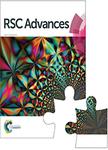版权所有:内蒙古大学图书馆 技术提供:维普资讯• 智图
内蒙古自治区呼和浩特市赛罕区大学西街235号 邮编: 010021

作者机构:Sichuan Univ West China Hosp Stomatol State Key Lab Oral Dis Chengdu 610041 Peoples R China
出 版 物:《RSC ADVANCES》 (皇家化学会进展)
年 卷 期:2015年第5卷第28期
页 面:21572-21579页
核心收录:
基 金:National Natural Science Foundation of China [81470721, 31170929] Sichuan Science and Technology Innovation Team [2014TD0001] State Key Laboratory of Oral Diseases [SKLOD201405]
摘 要:The management of chondral defects is a challenging topic of current interest for scientists and surgeons, which has a crucial impact on human cost. Even after several centuries after its first observation, this problem has still not found a satisfactory and definitive answer. Cartilage tissue engineering, which involves novel natural scaffolds, has emerged as a promising strategy for cartilage regeneration and repair. In this study, bio-plasticpoly-3-hydroxybutyrate-4-hydroxybutyrate (P34HB) film was first fabricated. The characteristics of P34HB film were tested using SEM and AFM. Cell morphologies on P34HB film were obtained using SEM and fluorescence microscopy after cell seeding. The tests of cell adhesion and proliferation on P34HB film were conducted using MTT and CCK-8 assays, respectively. Furthermore, full cartilage defects in rats were created and P34HB films were implanted to evaluate their healing effects within 8 weeks. It was found that P34HB film, as a biomaterial implant, possessed good in vitro properties for cell adhesion, migration, and proliferation. Importantly, in the in vivo experiment, P34HB film exhibited desirable healing outcomes. These results demonstrated that P34HB film was a good scaffold for cartilage tissue engineering for improving cell proliferation and adhesion.